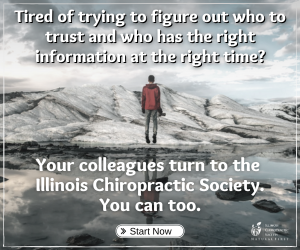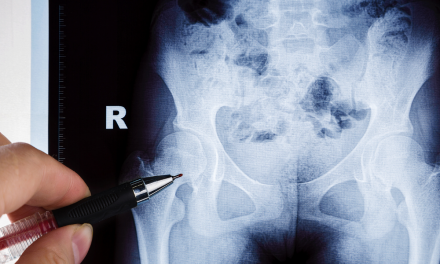
Evidence-Based Medicine in Action

Last month, I was inspired. Dr. Tim Bertelsman’s call or challenge should not be taken lightly. As chiropractic physicians, we should establish protocols in our office for various clinical presentations. These protocols should be a combination of available peer-reviewed research melded with our personal clinical experience.
In the world of evidence-based medicine, it is my opinion that our clinical decisions should be based on peer-reviewed sources in addition to our clinical experiences (after all, is that not evidence?). Unfortunately, our clinical experience is not the most relevant factor when determining usual and customary care. In the peer-reviewed journal world, your experience would be classified as a Case Report, if published. Perhaps it would be classified as a Case Series if you had more than one patient in which you documented a certain technique or modality to be beneficial for a particular condition. While a case report, or a case series, would be the lowest form of evidence available, it serves a very valuable service. These case reports/series will eventually lead to larger more respected studies with higher validity, but these studies typically do not occur without the groundwork being laid in advance.
Challenge
In this issue, I would like to present two case reports and a challenge. I would like to challenge you, as a practitioner to publish your experience; write a case report. Case reports can range from an interesting case to a condition you commonly manage in the office that responds to your established treatment protocol. I cannot stress the importance of this matter. If you look at current research, you will find that the data on manipulation is not being published exclusively by chiropractic physicians. If we want to remain the leaders in manual and manipulative therapy, it is imperative that we take the individual time as practitioners to publish our clinical experiences.
Nucleus pulposus deformation following application of mechanical diagnosis and therapy: a single case report with magnetic resonance imaging.
The patient in this case report was a 34-year-old female with constant low back and right gluteal pain rated at a 4/10 on the numeric pain rating scale. She was diagnosed with an L4/5 disc bulge by an MRI evaluation. The patient’s pain started 6 years prior to the presentment. At that time, she underwent recommended traction, electrotherapy, acupuncture, and strengthening of abdominal muscles which were continued for 3 months with no significant improvement. Since that initial onset, the symptoms have gradually progressed into the right glut.
Notable exam findings were the presence of a right lateral shift, positive right SLR at 40˚ and increased pain with passive dorsiflexion at 40˚. Significant loss of flexion and extension was noted with increased back and gluteal pain. The mild restriction was noted with left side-gliding with increased right gluteal pain while right side glide increased only back pain. The patient then underwent a complete mechanical assessment in which symptoms were completely abolished on the first visit with an increase of right SLR to 80˚ without any pain and a dramatic increase in the patient’s range of motion. The patient underwent what appeared to be another two visits in the following month, at which time she was discharged with no pain or difficulties with activities of daily living. An additional MRI was ordered.
Take home points:
The outstanding results of this case report are incredible because the patient was out of pain, but there are significant limitations when attempting to draw conclusions based on MRI findings. Namely, did the intervention have an effect on the disc or were the effects the result of time and the natural healing process?
Intermittent cervical traction and thoracic manipulation for the management of mild cervical compressive myelopathy attributed to cervical herniated disc: A case series.
This next case series included seven patients who were all women with a mean age of 40. The patients were included if they had complaints of neck pain and/or referred pain to the upper extremities in conjunction with one or more of the following upper motor neuron signs: positive Hoffmann’s reflex, clonus, and hyperreflexia. The exclusion criteria included gait disturbances such as a wide base of support, unsteady or ataxic walking, a history of pathologies that might preclude spinal manipulation, and evidence of vertebral artery disease or occlusion. Examiners utilized a medical screening questionnaire to indicate possible serious pathology, functional rating index and numeric pain rating scale.
After the evaluation, examiners identified patients to undergo thoracic thrust manipulation. They determined those who would benefit from manipulation as those with decreased active range of motion in the cervical spine as it may implicate upper thoracic dysfunction. All seven patients were treated with thoracic manipulation until the full cervical range of motion was achieved. The amount of cervical flexion performed during cervical traction was dependent upon the amount of active cervical flexion the patients demonstrated. All but one of the patients had a full cervical flexion range of motion. Those patients with full flexion received traction in 24˚ of cervical flexion. The one patient who did not have full flexion received traction at 15˚. Treatment time was 15-20 minutes of traction.
The seven patients were treated on average 9 times over 56 days. The median decrease in NPRS was 5 points with a median improvement in FRI scores of 26%. The three patients who demonstrated myotomal weakness demonstrated full strength at discharge. Two patients who had triceps hyporeflexia demonstrated normal triceps reflex at discharge according to the examiners.
Take home points:
I don’t think that I would be exaggerating if I said these are pretty typical results. No broad-based significant conclusions can be made from this data other than thoracic thrust manipulation and intermittent cervical traction appear to be effective in the treatment of mild cervical compressive myelopathy.
As with all case reports or studies, you cannot make broad, sweeping conclusions from the information. At best, the foundation of justifying treatment with a specific modality or technique has been laid. It will often times take many case reports with similar results to justify a large-scale study.
Have you had similar results? Perhaps with another form of intervention used in the treatment of common conditions in your office? If you use acupuncture, myofascial techniques, manipulation, a specific stabilization technique, or kinesiology, I encourage you to publish your experience. You never know, it may help contribute to determining what will be allowed as medically necessary in the future.

















